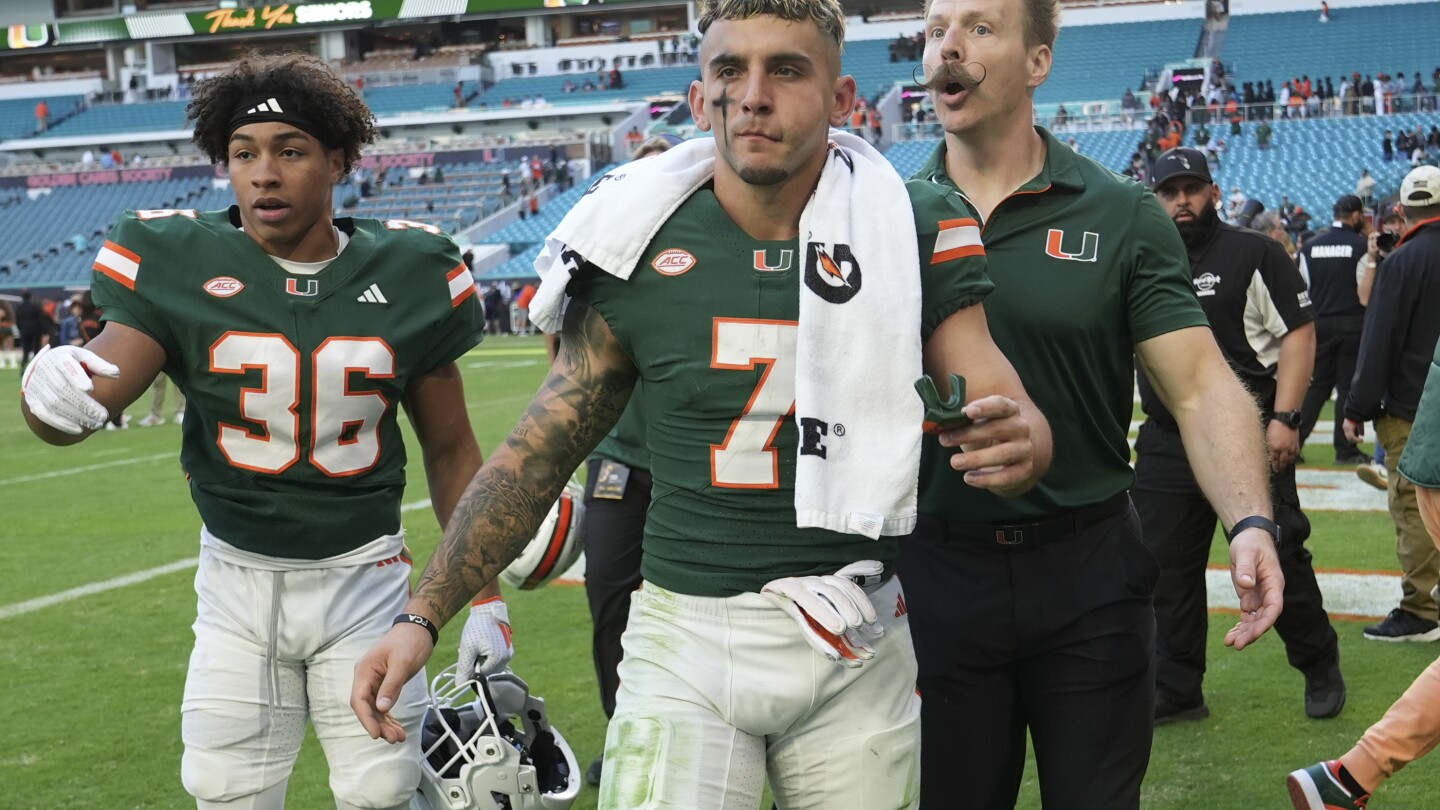The landscape of college football continues to evolve as Alabama’s rise in the latest College Football Playoff (CFP) rankings pushes the program into contention for another national championship, while Miami’s hopes of securing a postseason berth take a significant hit. This shift has important ramifications not only for the two teams involved but also for the broader playoff race. In this article, we’ll analyze how Alabama’s resurgence impacts the playoff picture, examine what Miami’s setback means for the future of their program, and explore the broader implications for college football’s evolving power dynamics.
Alabama’s Rise: A Return to Championship Contention
As the 2024 season progresses, Alabama has steadily climbed the CFP rankings, signaling the return of one of college football’s most dominant programs. Under the leadership of head coach Nick Saban, the Crimson Tide have maintained their perennial position as a playoff contender, thanks to a mixture of elite recruiting, experienced coaching, and relentless drive. With another impressive season unfolding, Alabama is making a strong case for a spot in the upcoming College Football Playoff. Key factors contributing to their ascension include:
- Strong Defensive Play: Alabama’s defense, once considered a question mark earlier in the season, has proven to be one of the most formidable units in the nation. The defensive line has consistently put pressure on opposing quarterbacks, while the secondary has been effective in limiting explosive plays.
- Quarterback Development: While Alabama has faced inconsistency at the quarterback position in recent years, the emergence of a new signal caller has provided stability on offense. The offense has capitalized on a balanced attack, with strong performances in both the passing and rushing game.
- Elite Recruiting Class: Alabama’s recruitment efforts have remained second to none, with top-tier talent filling critical positions, especially on the defensive side of the ball. This influx of young, high-potential players has reinvigorated the program and elevated its play at all levels.
Given these factors, Alabama’s rise signals the continued dominance of Saban’s program and presents a challenge to other teams fighting for a spot in the playoff. However, this ascension has come at the expense of other teams, including Miami, whose aspirations for a postseason berth now appear uncertain.
Miami’s Setback: What Went Wrong for the Hurricanes?
Miami entered the 2024 season with high expectations, hoping to secure a spot in the College Football Playoff and make a statement as a rising force in the ACC. However, a series of disappointing losses has dealt a major blow to their postseason aspirations. As of the latest rankings, the Hurricanes find themselves on the outside looking in, with little hope of making a late-season push for the CFP. Key factors contributing to Miami’s struggles include:
- Inconsistent Quarterback Play: Miami has been plagued by inconsistent quarterback performances, which have hindered their offensive production. Despite having talented skill players, the lack of a reliable signal caller has disrupted their ability to execute in key moments.
- Defensive Vulnerabilities: While Miami has a reputation for strong defensive play, they’ve been susceptible to big plays and have struggled to maintain consistency. Against top-tier offenses, their defense has often faltered, leading to disappointing losses.
- Uninspiring Losses: A number of Miami’s losses this season have come at the hands of unranked opponents or teams that were considered lower-tier. These setbacks have dimmed the program’s postseason hopes and raised questions about the future direction of the team.
The loss to teams they were expected to beat, combined with the inability to defeat conference rivals such as Florida State and Clemson, has left Miami with little room for error. With the season winding down, it seems increasingly unlikely that the Hurricanes will be able to secure one of the coveted playoff spots. While their future is far from bleak, this year’s setback serves as a sobering reminder of the challenges in the ever-competitive ACC.
The Broader Implications for College Football
The rise of Alabama and the fall of Miami reflect the shifting dynamics in college football and raise important questions about the future of both programs, as well as the broader landscape of the sport. Let’s break down some of the most pressing implications:
The Role of Elite Recruiting
One of the primary factors in Alabama’s resurgence is their unparalleled ability to recruit at the highest level. College football recruiting has become increasingly crucial in determining a team’s success, and Alabama’s dominance in this area is a key driver behind their return to national prominence. Miami, by contrast, has struggled to consistently secure top-tier talent, particularly in key areas such as quarterback and defensive line. The discrepancy in recruiting prowess underscores a larger trend in college football, where elite programs with strong recruiting pipelines are more likely to maintain success year after year.
Conference Realignment and Its Impact
The ACC’s increasing vulnerability, especially with the dominance of teams like Clemson, has put additional pressure on Miami to rise above their competition. With the ongoing changes in conference alignments and the expansion of the College Football Playoff to 12 teams, conferences such as the ACC may face greater difficulty in securing multiple playoff spots, making it harder for programs like Miami to break through. Meanwhile, conferences like the SEC, which boasts Alabama, Georgia, and other powerhouse programs, are well-positioned to continue their dominance in the new playoff format.
The Future of College Football’s Powerhouses
The continued success of Alabama raises an interesting question about the future of college football’s elite programs. As the sport evolves, with NIL (Name, Image, and Likeness) agreements, the transfer portal, and other changes reshaping the landscape, Alabama’s ability to adapt to these changes has allowed them to stay ahead of the curve. However, Miami’s struggles may point to a deeper issue: the challenge of maintaining relevance in an era where recruiting is more competitive, and the pressure to succeed is higher than ever before.
It remains to be seen whether Miami can learn from this season’s setbacks, adjust their recruiting strategies, and return to the playoff race in the coming years. On the other hand, Alabama’s continued success suggests that the Crimson Tide will remain a fixture in the playoff conversation for years to come, especially with Saban still at the helm.
Conclusion: A Changing Landscape for College Football
Alabama’s rise and Miami’s setback are just two of many storylines that have shaped the 2024 college football season. For Alabama, the climb back to championship contention is a testament to the program’s ability to reload and stay relevant at the highest level. For Miami, the challenges of this season highlight the difficulty of maintaining consistent success in a competitive and rapidly changing sport.
The impact of these shifts is far-reaching. With the expansion of the College Football Playoff and the continued evolution of college football’s landscape, the road to the postseason has become more unpredictable. Alabama’s ascension signals the continued dominance of elite programs, while Miami’s struggles may prompt changes in their approach to recruiting and team development. As the season progresses, these changes will undoubtedly affect the trajectory of both programs and influence the broader dynamics of college football for years to come.
For more analysis and updates on college football, click here to follow our comprehensive coverage.
To explore how the College Football Playoff expansion is changing the game, visit this official NCAA page.
See more Sky News Portal



